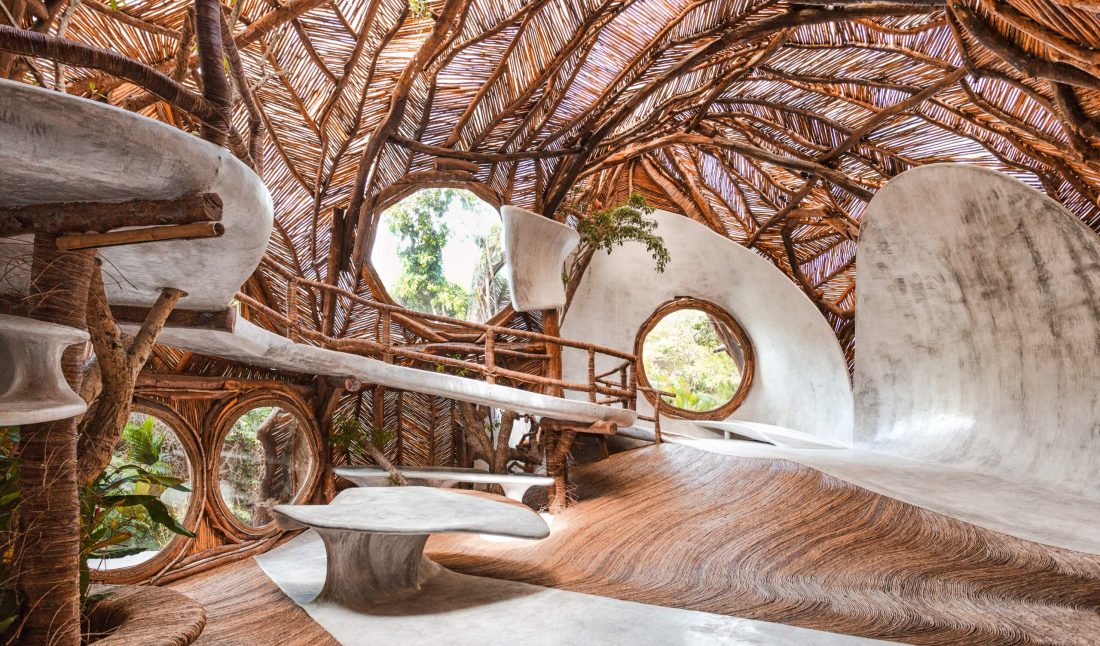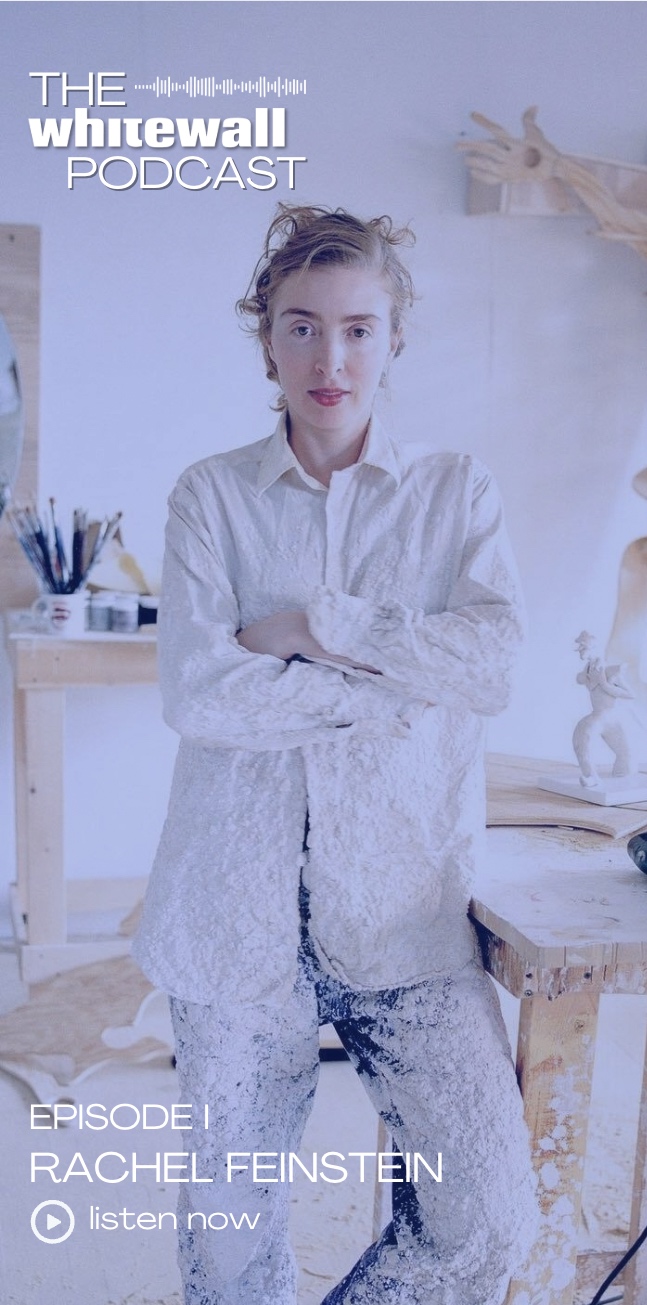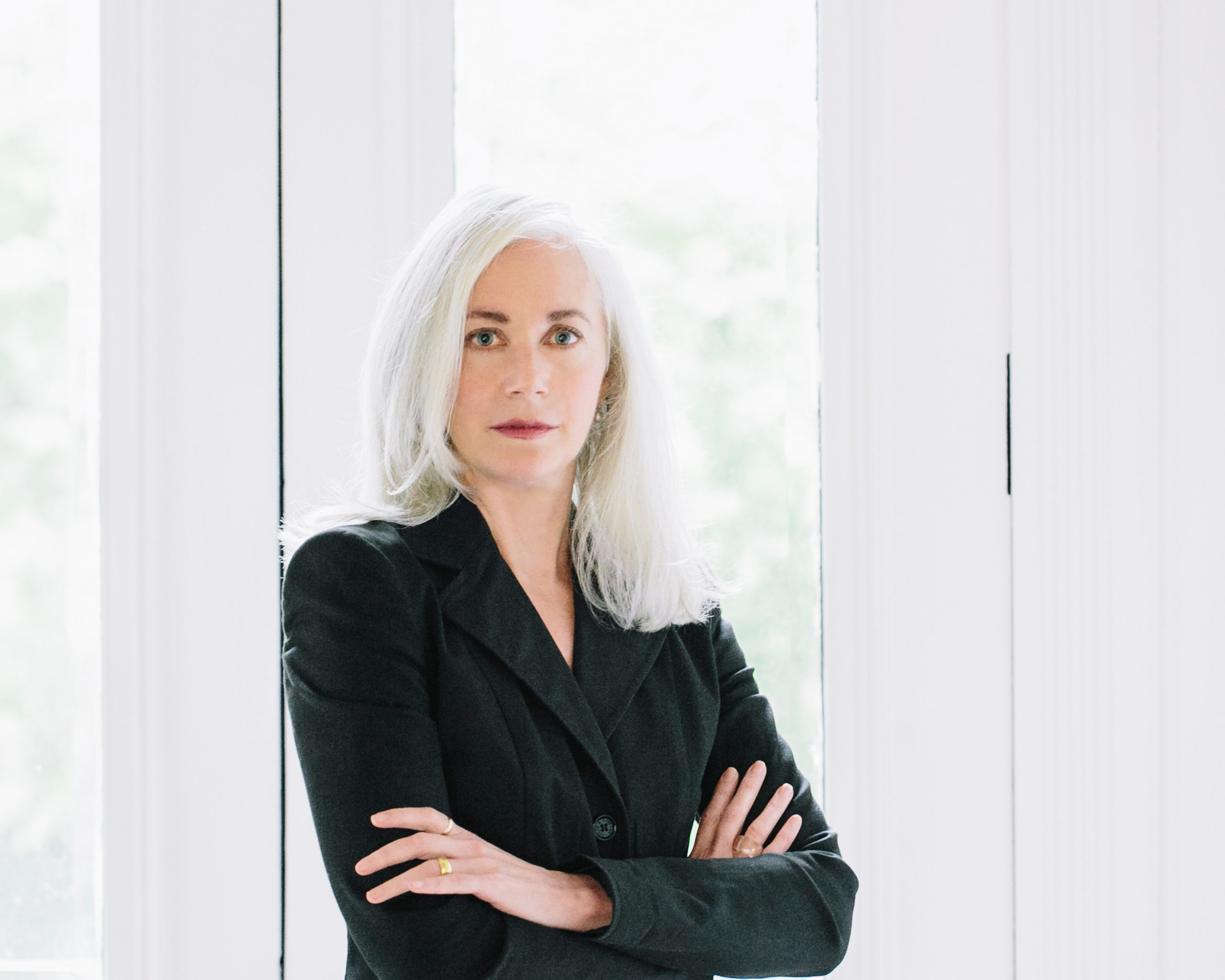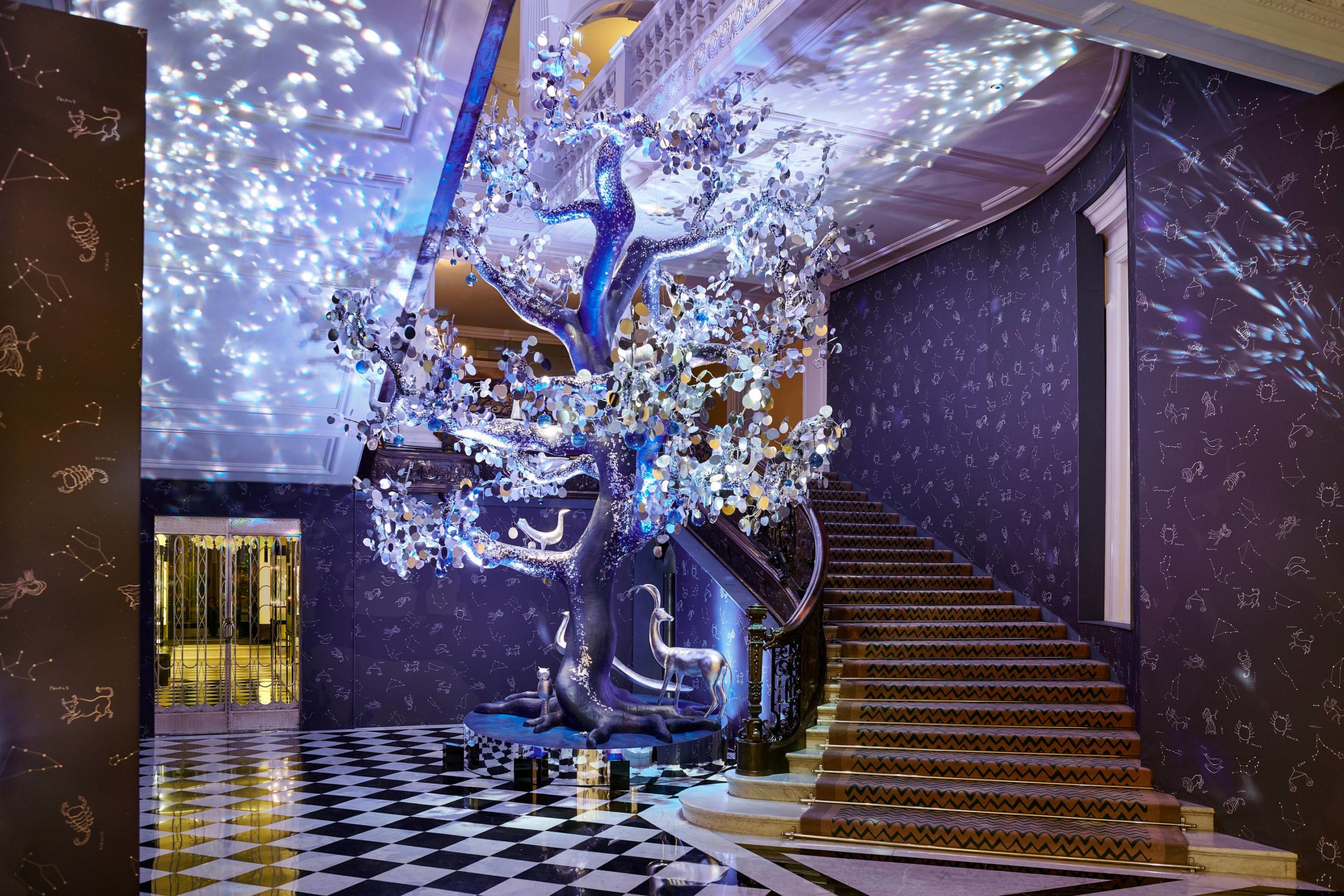In 2021, András Szántó released the book The Future of Museums: 28 Dialogues, which saw the cultural strategist joining in conversation with museum directors across the world, asking for their remarks and anecdotes on the institution of the museum and how it’s changing to better serve visitors in the present moment. Today, Szántó continues that discussion in his latest book with publisher Hatje Cantz, Imagining the Future Museum: 21 Dialogues with Architects.
Considering the content, mission, and inner workings of the museum to be its “software,” Imagining the Future Museum: 21 Dialogues with Architects proposes that with the changes being made to the physicality of the museum, its “hardware”—the space in which the software exists—must also be due for an update. In its pages, the book holds conversations with talented architects including David Adjaye, Elizabeth Diller, David Chipperfield, Xu Tiantian, Kulapat Yantrasast, Bjarke Ingels, Frida Escobedo, and Kunlé Adeyeme, who share details on current projects, key considerations in their designs, observations on current architectural needs and trends, and other thoughts, accompanied by a gorgeous set of imagery to detail their work. Curious about the book and Szántó’s extensive knowledge of the topic at hand, Whitewall was excited to learn more.
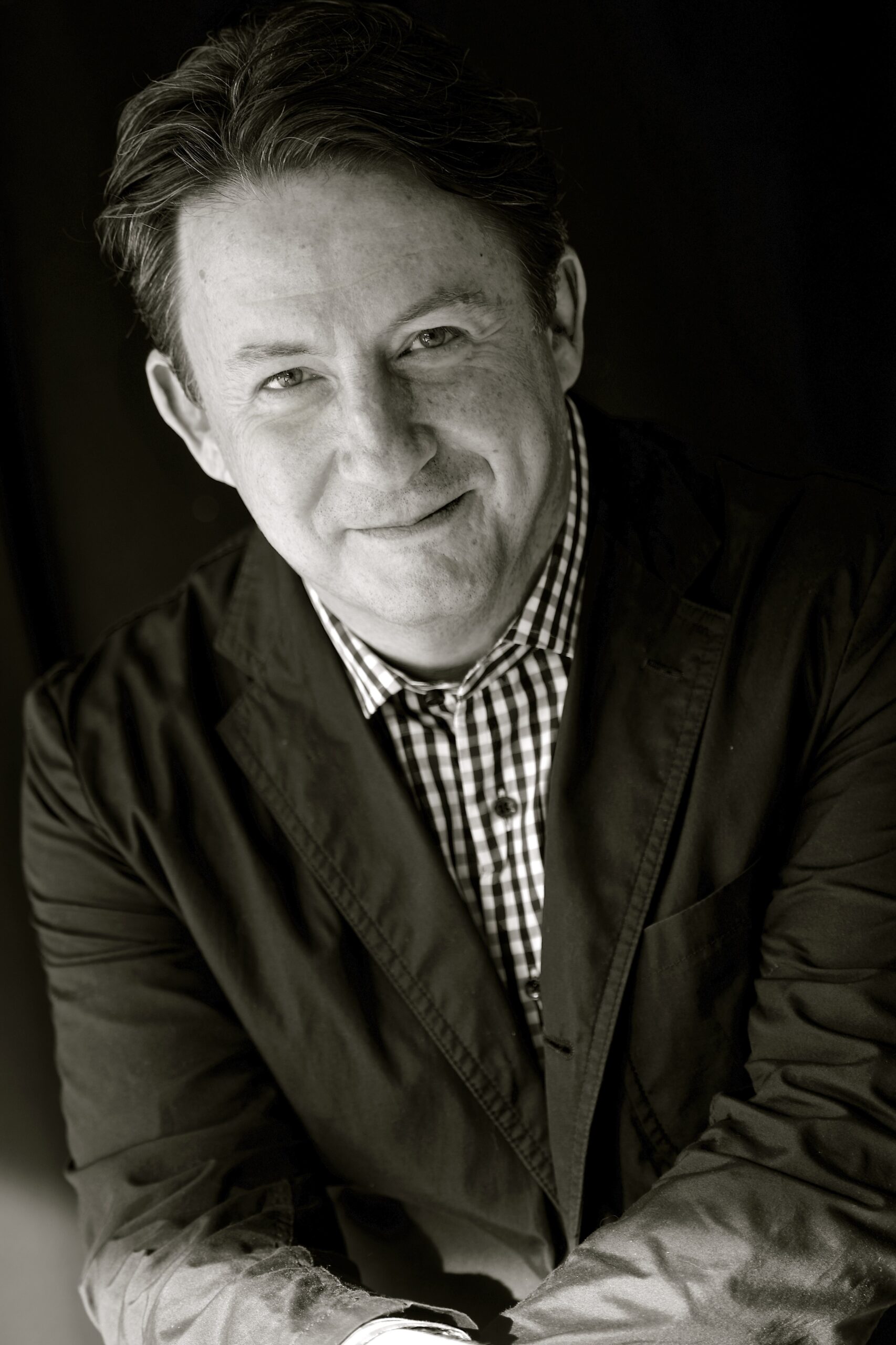 Portrait of András Szántó by Patrice Casanova.
Portrait of András Szántó by Patrice Casanova.
WHITEWALL: Tell us about the process of writing Imagining the Future Museum: 21 Dialogues with Architects. After releasing The Future of the Museum: 28 Dialogues, what made you feel the need to further these discussions?
ANDRÁS SZÁNTÓ: The new book seemed to me a logical next step to take after the previous one. In The Future of the Museum I spoke with art museum directors around the world about where they see the museum going. And what those conversations revealed was that these leaders were writing new code, as it were, for the museum. We’re seeing the emergence of a more community-facing, culturally inclusive, socially engaged, more welcoming and open and accessible museum, among other changes. So, if there is a new software animating the museum, I thought, surely there must be a new hardware to go along with it. This led me to the architects.
As with the first book, my chief intention was to showcase a global range of voices. The globalization of museums—and of museum architecture—remains one of the most salient drivers of change. The museum is becoming more pluralistic as it is embedded in diverse geographies and cultural contexts.
Finally, based on the advice of friends who are steeped in architecture more than I am, I decided not to go after the familiar pantheon of star museum architects. The majority of the interlocutors in this book are up-and-coming practitioners or members of the middle generation. They will leave a stamp on museum design for decades to come.
WW: When we last spoke to you in 2021 surrounding The Future of the Museum: 28 Dialogues, your general statement honed in on the importance of balance and a certain symbiosis between the buildings themselves, their environments, and the art that is featured there. We’re wondering if this latest book and the insight you gained during the writing process have suggested any new shifts or developments in the institution of the museum as a whole.
AS: I would single out climate awareness, which has gained steadily in importance. One of the concerns that architects are more likely to point out than museum directors is the necessity of reconciling buildings with their natural surroundings. Sure, museums are developing protocols for conserving energy and some are addressing the climate emergency via exhibitions and programs. But architects are acutely aware of the difficult choices involved in designing buildings at a time of profound anxiety about our planet’s future. And they offer solutions.
There are examples of underground galleries in the book, which barely need heating or air conditioning, for example at Bundanon, Kerstin Thompson’s museum and residency complex in Australia. In museum construction as elsewhere, there is push to avoid new construction and to redeploy existing buildings. Two architects in the book—Xu Tientien in China and the Nairobi-based partnership, Cave Bureau—have envisioned cultural facilities inside the existing topographies of natural caves and abandoned quarries.
Architecture, even more than museology, has faced a reckoning with the fact that the climate crisis is a 360 challenge involving all aspects of institutions, from physical structures to internal organizations to the messages they broadcast into the world.
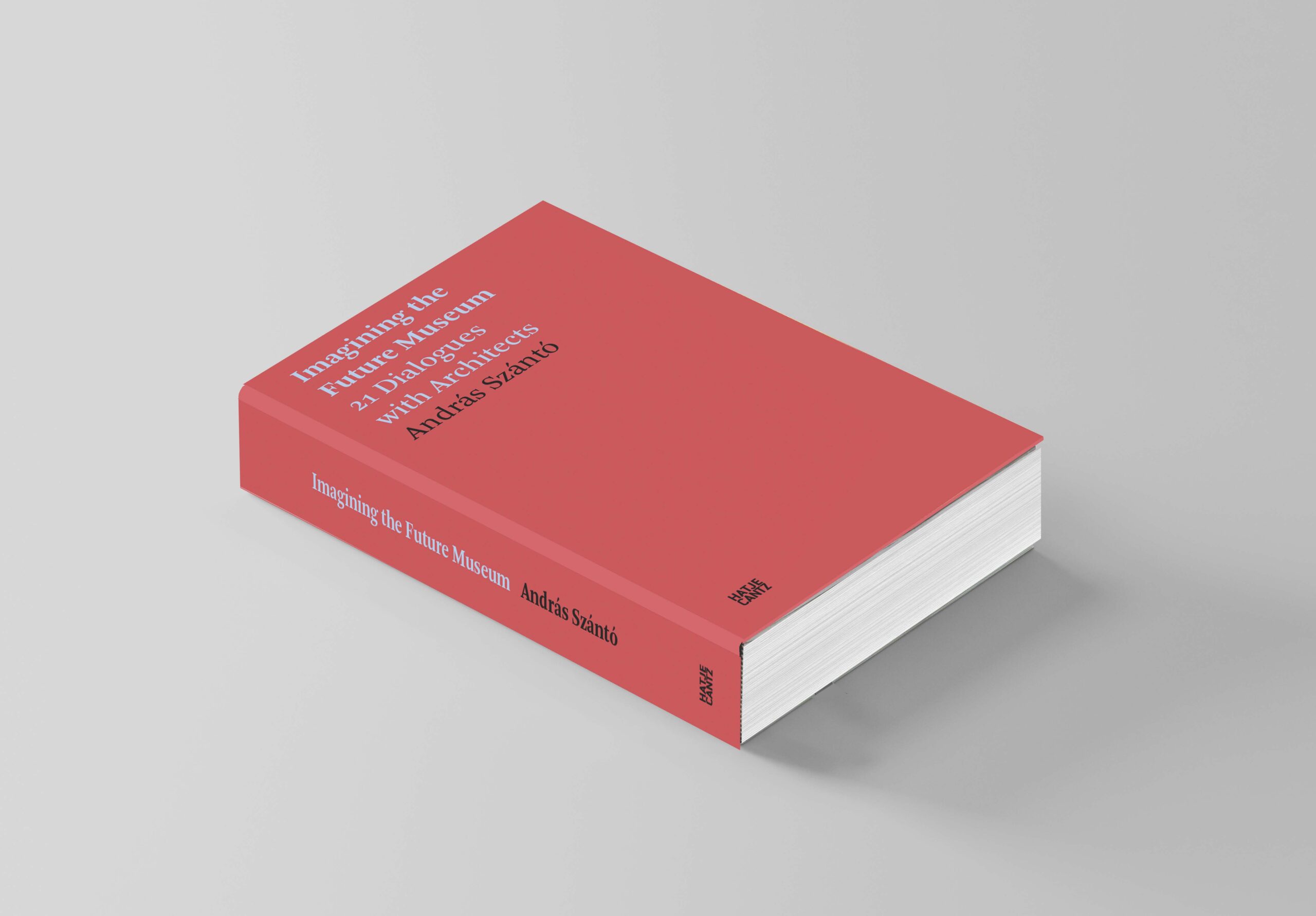 “Imagining the Future Museum: 21 Dialogues with Architects” by András Szántó, courtesy of Hatje Cantz.
“Imagining the Future Museum: 21 Dialogues with Architects” by András Szántó, courtesy of Hatje Cantz.
WW: The architects you’ve spoken with are all of varying backgrounds, practices, and identities. What were some of the different points of focus you discussed with them? Were there any common themes or shared sentiments or predictions?
AS: I came away with a similar feeling as with the previous book: Each architect is different and each museum project is different, yet there is a discernible convergence of viewpoints, a broad alignment of attitudes that is more-or-less generational. At any given time, a profession like architecture has a mood, a set of shared beliefs that builds on previous paradigms, propelled by the challenges of a shared socio-cultural moment, conditioned by technological possibilities as well as the internal evolution of the profession’s reflection about itself.
A widespread attitude among museum architects working today is a repudiation of “starchitecture”—the propensity to build iconic buildings that function as works of art themselves, staking a claim on the urban skyline in a “look at me” demonstration of architectural brio. Even architects who have made such buildings – the paradigmatic example is, of course, Guggenheim Bilbao – are working now in more restrained idioms. A realization has dawned that such buildings, for all their magnetic allure, can feel exclusionary, emblems of a problematic world order.
A new vocabulary of accessible architecture is emerging that stresses porosity, openness, flexibility, transparency, cultural sensitivity, ecological embeddedness, and an aversion to hierarchies, delivered at a human scale, with warmth, humility, and a measure of heightened self-awareness about the complex, often contradictory role of the art institution in contemporary society.
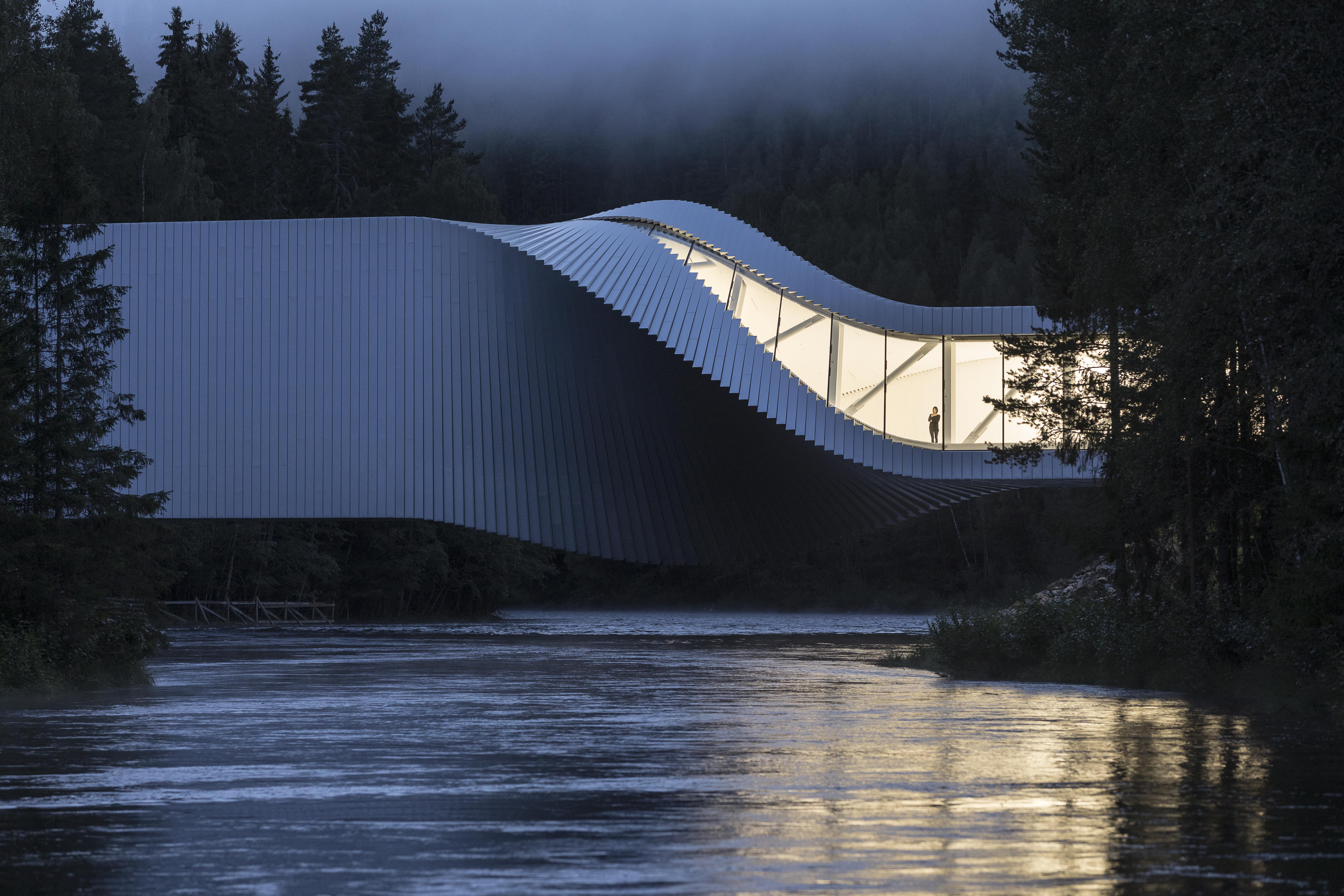 The Twist Museum, Jevnaker, Norway by Bjarke Ingels of BIG | Bjarke Ingels Group; photo by Laurian Ghinitoiu & BIG – Bjarke Ingels Group.
The Twist Museum, Jevnaker, Norway by Bjarke Ingels of BIG | Bjarke Ingels Group; photo by Laurian Ghinitoiu & BIG – Bjarke Ingels Group.
WW: Many of the architects in the book deal with more populated areas and cities, but one in particular, Xu Tiantian, focuses on projects in rural areas of China. Tiantian said, “Rural life itself is a museum,” given that rural living is about maintaining and continuing a certain way of life—which can then be observed. How did this resonate with you? How do you see this stance pertaining to contemporary institutions and the general direction in which museums might be headed?
AS: Xu Tientian’s work was a revelation. It demonstrates this idea of pluralism in the museum: That the museum need not be a transplant of an institutional form inherited from the Global North, but that it can respond to hyper-local needs in a culturally-specific language. Her buildings challenge the whole concept of the museum, not just its architecture, but also its mission.
I was fascinated to learn about the current interest in China in rediscovering the countryside, a phenomenon with echoes in 18th and 19th Europe, which saw similar responses to rapid industrialization and urbanization. The idea that a whole way of life – the rituals of making tofu or rice wine – can become the subject of a museum is both poetic and disruptive. No less fascinating is Xu Tientian’s “acupunctural” approach to building: the humility of embracing a small number of carefully chosen modest architectural interventions, developed in close dialogue with the local community. There are important lessons here for museum development in general.
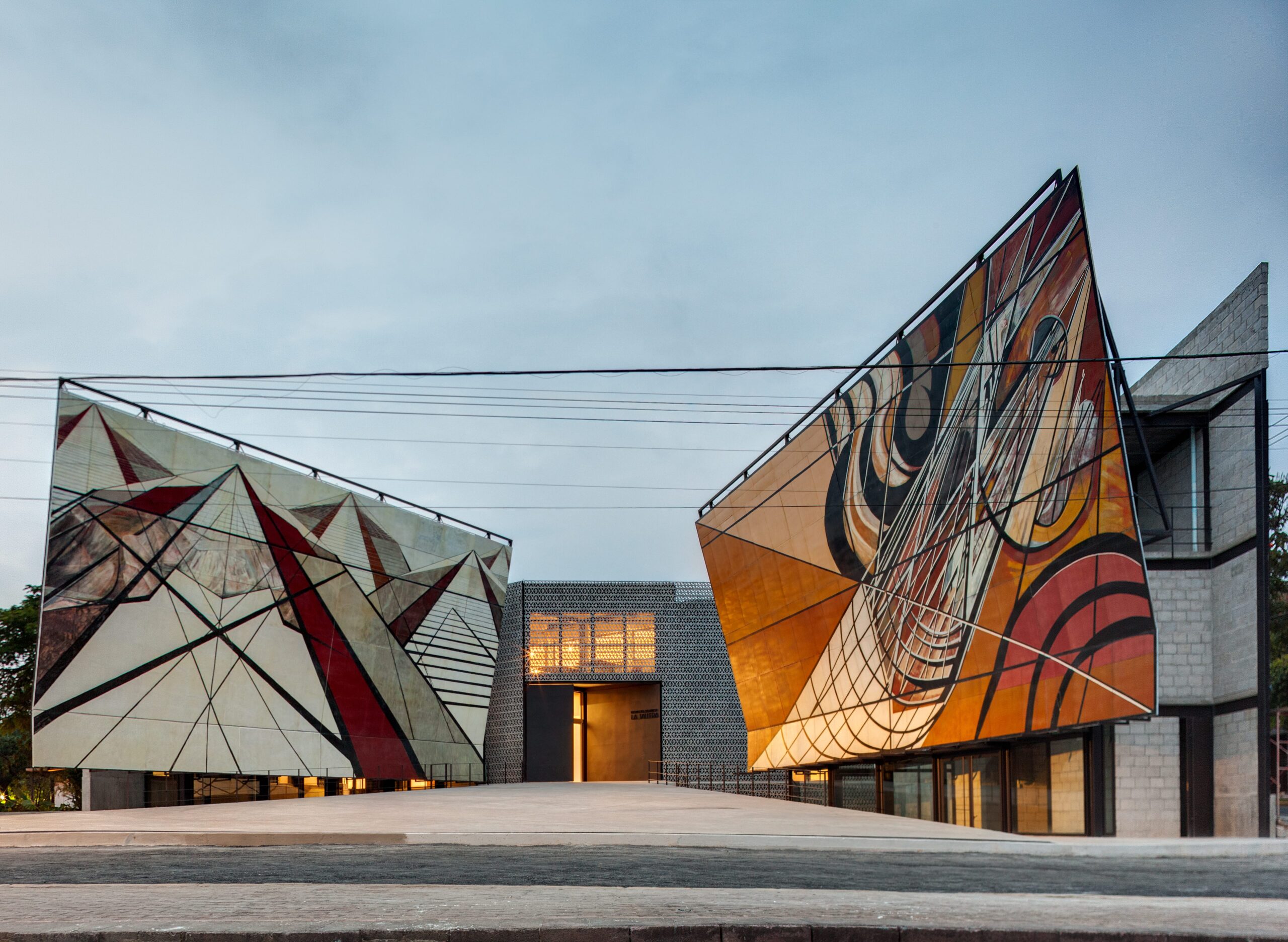 La Tallera Siqueiros, Cuernavaca, Mexico by Frida Escobedo; photo by Rafael Gamo.
La Tallera Siqueiros, Cuernavaca, Mexico by Frida Escobedo; photo by Rafael Gamo.
WW: After the process of collecting conversations and data for this publication, how might you summarize a vision for the future of museums?
AS: The first conclusion the two books together make clear is that the hardware and the software of the museum are inseparable. But the museum should never be confused with its building. A museum building, like a home or the internet, is infrastructure, a tool. It can be used or misused, depending on who is activating it and who is being invited into it.
Not to dodge your question about a vision for the future, I would like to invoke two comparisons, two typologies that recur often in the dialogues. One is that of a garden: a place with low thresholds, porous edges, and open possibilities. As the Los Angeles-based Kulapat Yantrasast noted in his dialogue, “there is no one way to experience a garden.” That sense of open, un-imposed, un-hierarchical possibility will be vital for the future art institution.
The other analogy is the library. Libraries, after a near-death experience when computers promised to deliver everything in them to the palm of your hand, transformed into centers for the community. They have succeeded far more than museums in becoming truly democratic and welcoming spaces where people of all backgrounds and educational levels can feel at home. There are a thousand ways to conceive a museum, and architects will continue to delight us with new solutions. But these values will hopefully become part of the DNA of the future museum.
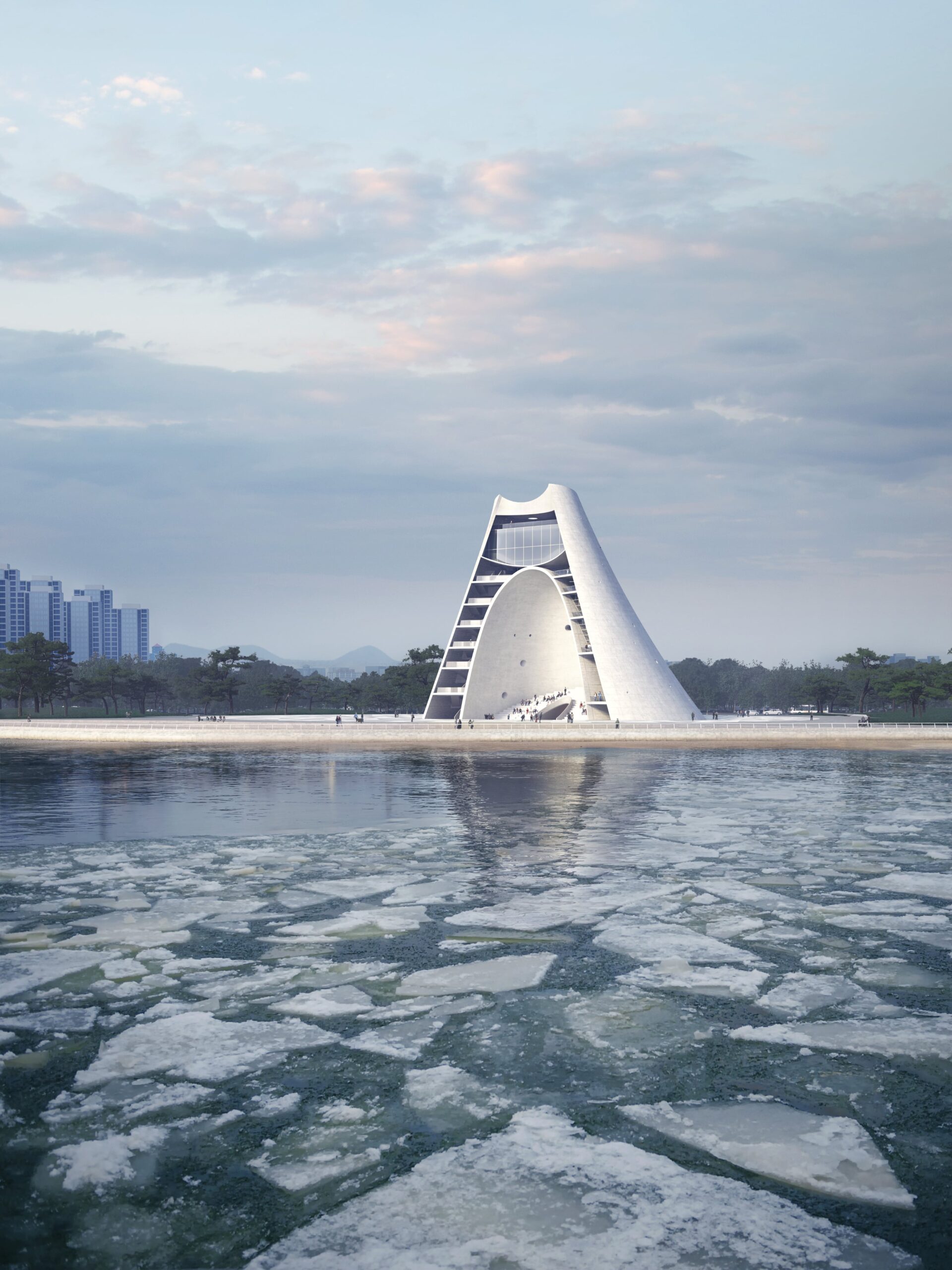 Rendering of view from the sea of Sun Tower, Yantai, China by Li Hu & Huang Wenjing of OPEN; rendering © OPEN.
Rendering of view from the sea of Sun Tower, Yantai, China by Li Hu & Huang Wenjing of OPEN; rendering © OPEN.







